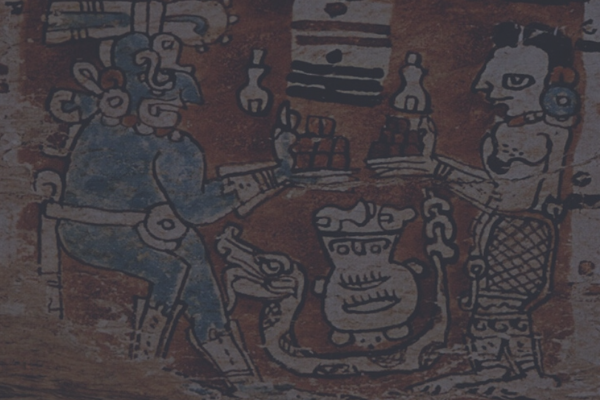The combination of Psilocybin and Cacao share a long history of traditional and ritual use. The combination has been used by the Aztecs for thousands of years because of their synergistic effects. Psilocybin is the active active ingredient found in psychoactive mushrooms and truffles. The truffles or mushrooms can be combined with Cacao to make a very pleasant magical chocolate beverage. The history on Psychoactive Mushrooms and Cacao throughout the centuries is mystical, tragic and hopeful at the same time and is essentially a reflection of the socio-cultural development of mankind in general.

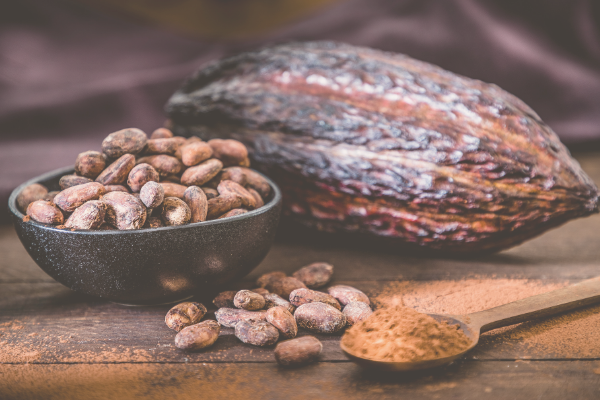
Sacred Mushrooms and the Aztecs
When people think of the ritual use of psilocybin, Central Mesoamerica often comes to mind. Over the years, a captivating array of indigenous artwork has been discovered, clearly illustrating the prominent role psychoactive mushrooms played in cultural and religious practices. The psychedelic experience held great significance and was seen as a means to access alternate layers of consciousness.
Aztec mythology speaks of these extraordinary mushrooms, stating that they were gifted to their ancestors by the serpent god Quetzalcoatl, the creator of all life. The stories of spiritual wisdom and insights derived from these mushrooms are embedded in ancient artifacts, artwork, and myths, revealing a deep connection to these sacred practices. The Aztecs referred to the sacred mushrooms as Teonanacatl, meaning “Flesh of the Gods.” In this term, Teo means “God,” and nanacatl means “fungus of Flesh.”


Cacao as a beverage of the Gods
The Aztecs of Central Mesoamerica held cacao in high esteem. Indigenous cultures considered cacao a sacred plant with mood-enhancing properties, an aphrodisiac, and an essential element in enhancing the magic mushroom ceremonies. Cacao was typically prepared as a drink, often mixed with various herbs, and on special occasions, it was combined with psychoactive mushrooms. While cacao was frequently used in rituals and ceremonies, it was predominantly consumed by individuals of high status, including priests, senior government officials, military officers, and war heroes.
Why is Cacao so fantastic?
The scientific name of cacao is Theobroma, which translates to “Food (broma) of the Gods (Theo).” Cacao is rich in antioxidants and packed with vitamins and minerals. For clarity, we are referring to unprocessed raw cacao here, not to be confused with dark chocolate purchased from the supermarket. The bars of chocolate you find there are exposed to high temperatures, which depletes much of their active ingredients. Raw and pure cacao contains several substances responsible for its subtle but profound effects:
PEA (phenylethylamine), also known as “the love molecule,” is a neurotransmitter naturally produced by the brain when we fall in love. It stimulates the pleasure centers in the brain, generating feelings of attraction, desire, and a pleasant sense of euphoria.
Theobromine is similar to caffeine and has a stimulating effect. It increases oxygen intake and dilates blood vessels, which boosts blood flow to the heart.
Serotonin is a neurotransmitter that regulates mood, and it is also found in cacao. Increased serotonin levels play a significant role in perception and can foster feelings of tranquility, balance, desire, and sensuality.
Anandamide, also known as the “bliss molecule,” is a neurotransmitter in cacao that, when released in the brain, induces feelings of euphoria. This is likely why cacao is often associated with happiness and satisfaction.
In addition to these compounds, raw cacao contains many beneficial nutrients, including calcium, magnesium, chromium, iron, zinc, copper, various MAOIs (monoamine oxidase inhibitors), and small amounts of caffeine. Raw cacao also boasts more antioxidants than any other superfood.

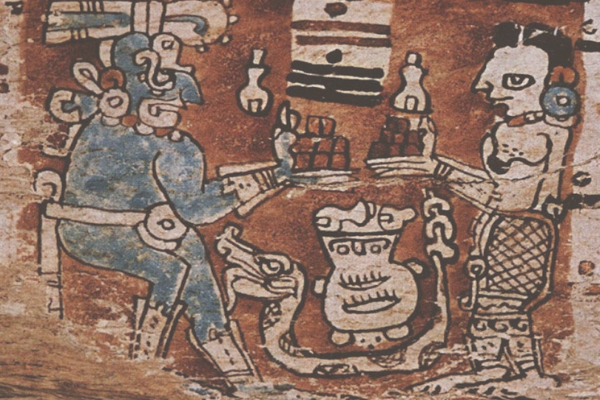
A golden combination
Psychoactive truffles and mushrooms, along with cacao, influence the functioning of our serotonin receptors. The combination is renowned for its synergetic effects, meaning they enhance and complement each other positively. It is known that the MAOIs (monoamine oxidase inhibitors) found in cacao slow down the breakdown of psilocybin and psilocin, leading to stronger and longer-lasting effects. Additionally, cacao’s synergetic properties improve the absorption of the psychoactive compounds. Together, these factors can result in a more intense and sustained experience. While cacao itself is non-psychoactive, it does have mood-enhancing and stimulating properties, and for centuries, indigenous cultures have regarded it as the ultimate heart-opener.
Where does this synergy come from?
Scientists have not yet pinpointed the exact cause of the synergetic effect of “The Aztec Combo.” However, several speculative theories have emerged. One suggestion is that the theobromine in cacao may help reduce the nausea often experienced during the onset of a psychedelic journey by allowing the body to respond more efficiently. Theobromine is known for its ability to open blood vessels, stimulate circulation, and enhance oxygen intake by the lungs. Additionally, it is believed that PEA, known as “the love chemical,” could play a role in fostering a positive experience. This compound is thought to improve overall mood, potentially enhancing the progression of the psychedelic experience.


The Aztec Combo to Western Civilization
The use of cacao combined with magic mushrooms by the Aztecs was confirmed around 1486 in a note from the Spanish Conquistadors: “There is no mention of anyone drinking wine to get drunk, but only woodland mushrooms which they ate raw and an abundance of chocolate which was drunk during these solemnities (rituals).”
In 1955, Gordon R. Wasson rediscovered this practice when he participated in an ancient ritual under the guidance of Mazatec shaman Maria Sabina, consuming a high dose of psychoactive mushrooms. Wasson reported that the cacao beverage was consumed before the ritual began. After ingesting this “sacred” combination, he described the experience as “extraordinarily profound and insightful.” This discovery was later published in Life Magazine in June 1957.
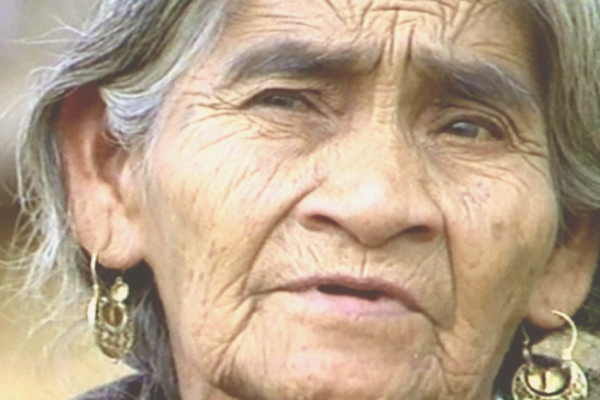
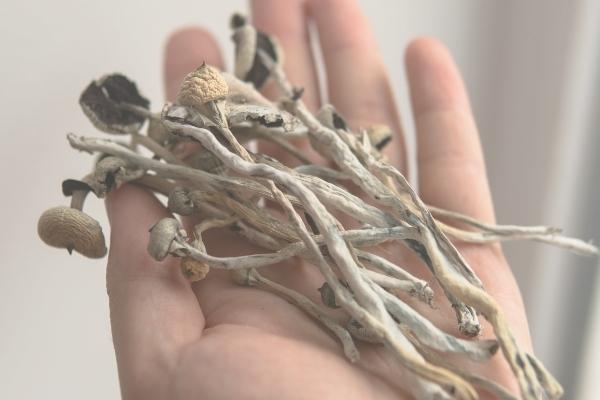
Maria Sabina as the bearer of wisdom
María Sabina became internationally renowned as the “queen of hallucinogenic mushrooms.” In 1955, her deep knowledge of these sacred mushrooms was brought to public attention by Gordon R. Wasson, leading thousands of people from around the world to travel down the rugged roads to the remote mountain region of Huautla, where Sabina had spent most of her life. There, they participated in ceremonies involving the “children of God,” the sacred psilocybin mushrooms, as Sabina referred to them. Among her visitors were famous figures like John Lennon, Mick Jagger, and Bob Dylan.
How to Make Your Own Cacao Elixir?
If you want to experience the golden combination in the traditional way, drink the warm cacao drink about an hour before consuming the truffles or mushrooms. This gives the cacao time to work and creates a smooth foundation for a harmonious psychedelic experience. However, if you want to make a complete cacao and truffle or mushroom drink, follow these steps:
- Chop the truffles or mushrooms into the smallest possible pieces.
- Place them in a bowl or large mug and pour warm (hot, but not boiling) water over them.
- Let it steep for about 15 minutes, stirring occasionally.
- Place a strainer over your desired drinking glass or mug and pour the brew through.
- Add 20-30 grams of raw cacao and any spices you like (such as cinnamon, cardamom, vanilla, or turmeric), and stir the mixture gently until everything dissolves.
- Avoid refined sugars or sweeteners and keep the drink as natural as possible.
- For a creamier texture, you can add a splash of plant-based milk, such as almond, oat, or rice milk.
Important: Never pour boiling water over the truffles or mushrooms! The hotter the water, the more active compounds will be lost, both in the truffles/mushrooms and the cacao. So make sure the water isn’t too hot and let it cool down a bit after boiling before adding it to the truffles, mushrooms, or cacao.


Sources
- https://www.latimes.com/archives/la-xpm-1985-12-01-sp-5709-story.html
- https://www.ancient-origins.net/history-ancient-traditions/tripping-through-time-fascinating-history-magic-mushroom-007474
- https://www.worldhistory.org/Quetzalcoatl/
- http://nahuatlstudies.blogspot.com/2015/01/chicolatl-not-xocolatl.html
- https://www.britannica.com/topic/Mesoamerican-civilization
- https://www.clinicaleducation.org/resources/reviews/pea-a-natural-antidepressant/
- https://www.livescience.com/49074-hallocinogens-drugs-early-mesoamerica.html
- https://www.researchgate.net/figure/The-archeological-evidence-about-the-consumption-of-magic-mushrooms-in-Maya-and-Aztec_fig4_330779013
- https://science.howstuffworks.com/magic-mushroom6.htm


